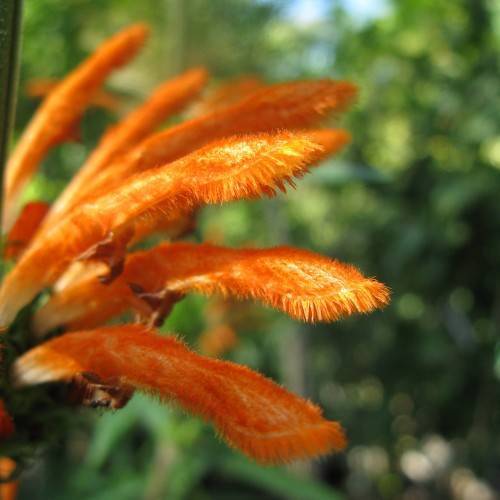
lion's ear
Leonotis leonurus
Cycle:
Perennial
Watering:
Average
Hardiness Zone:
8 - 11
Flowers:
Flowers
Sun:
full sun
Fruits:
Fruits Ready In Fall
Leaf:
Yes
Growth Rate:
High
Maintenance:
Low
Drought Tolerant:
Yes
Salt Tolerant:
Yes
Thorny:
Yes
Invasive:
Yes
Tropical:
Yes
Care Level:
Medium
watering
The Lion's Ear plant should be watered once every 7 to 10 days during its active growing season. You should water the plant deeply, allowing the soil to become slightly moist but not wet. During the winter months, reduce watering to once per month. When watering your Lion's Ear plant, be sure to use room temperature water as cold water can shock the plant.
sunlight
Lion's ear plants require substantial direct sunlight in order to thrive. They should be placed in an area that receives at least 6 hours of direct sunlight per day. Morning sun is recommended for best results, and late afternoon sun should be avoided as it can be too powerful for this plant species. Placement in a south facing window is ideal if kept indoors.
pruning
Pruning is usually done in the early spring, ideally beginning when the plant is still flowering. Pruning should consisit of removing 1-third to 1-half of the entire plant, to ensure that it does not become overly large and leggy. Thinning out the canes to direct growth will create a fuller and more lush form that presents an array of flowers. Pruning also helps to keep the plant healthy and vigorous.
